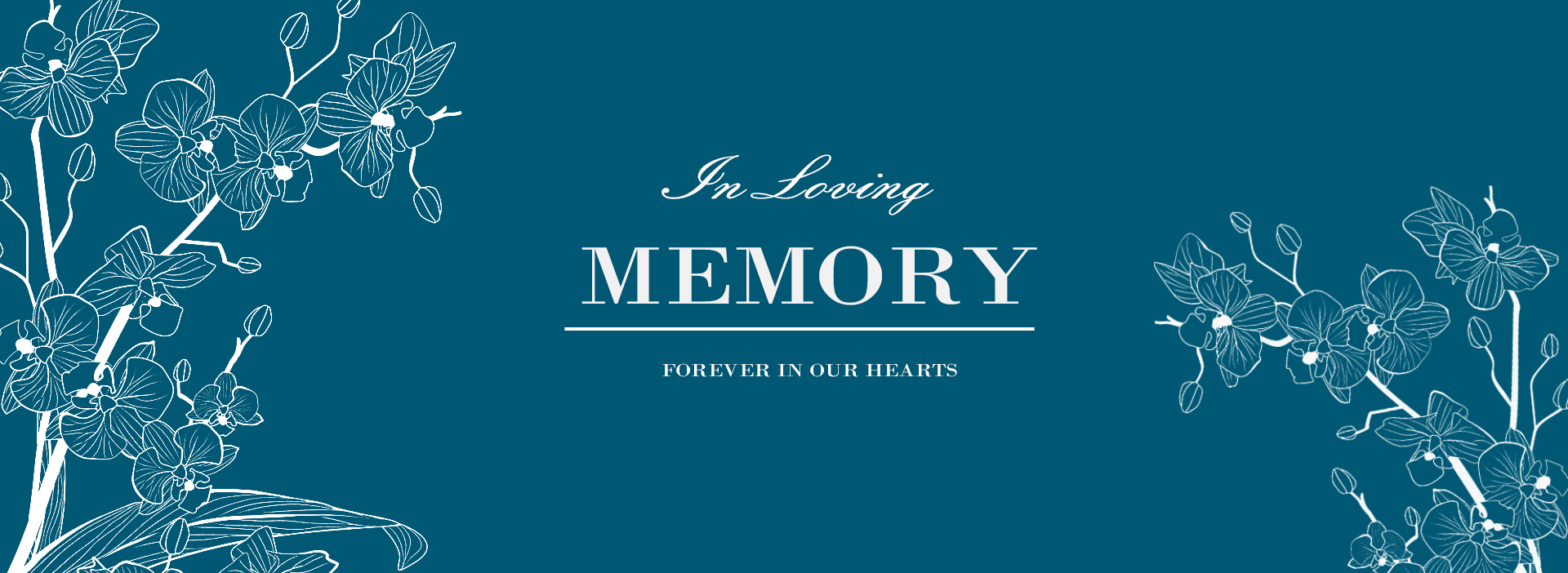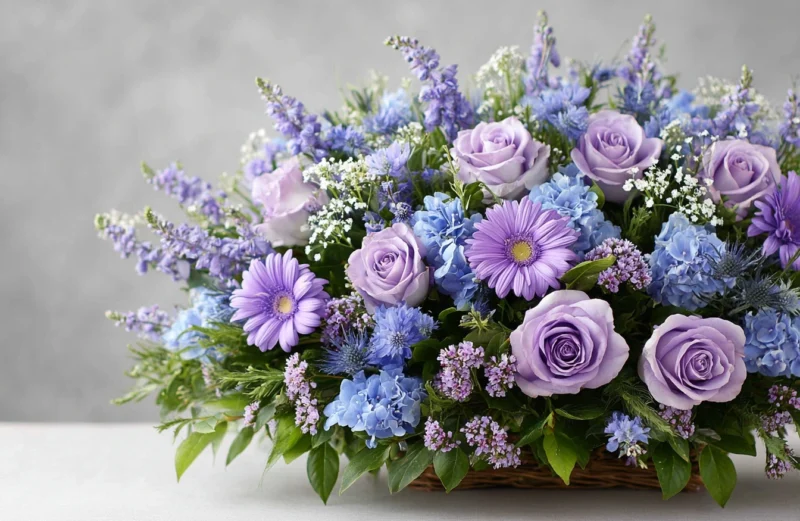Blue funeral flowers, although less common than their more vibrant counterparts, have been increasingly recognized for their significance in funeral arrangements. The hue of blue traditionally embodies various meanings, often representing tranquility, peace, and healing. These attributes can be particularly comforting for grieving family members and friends, allowing them to find solace during difficult times. In numerous cultures, blue flowers are seen as symbols of remembrance and they serve as a way to honor the lives of those who have passed.
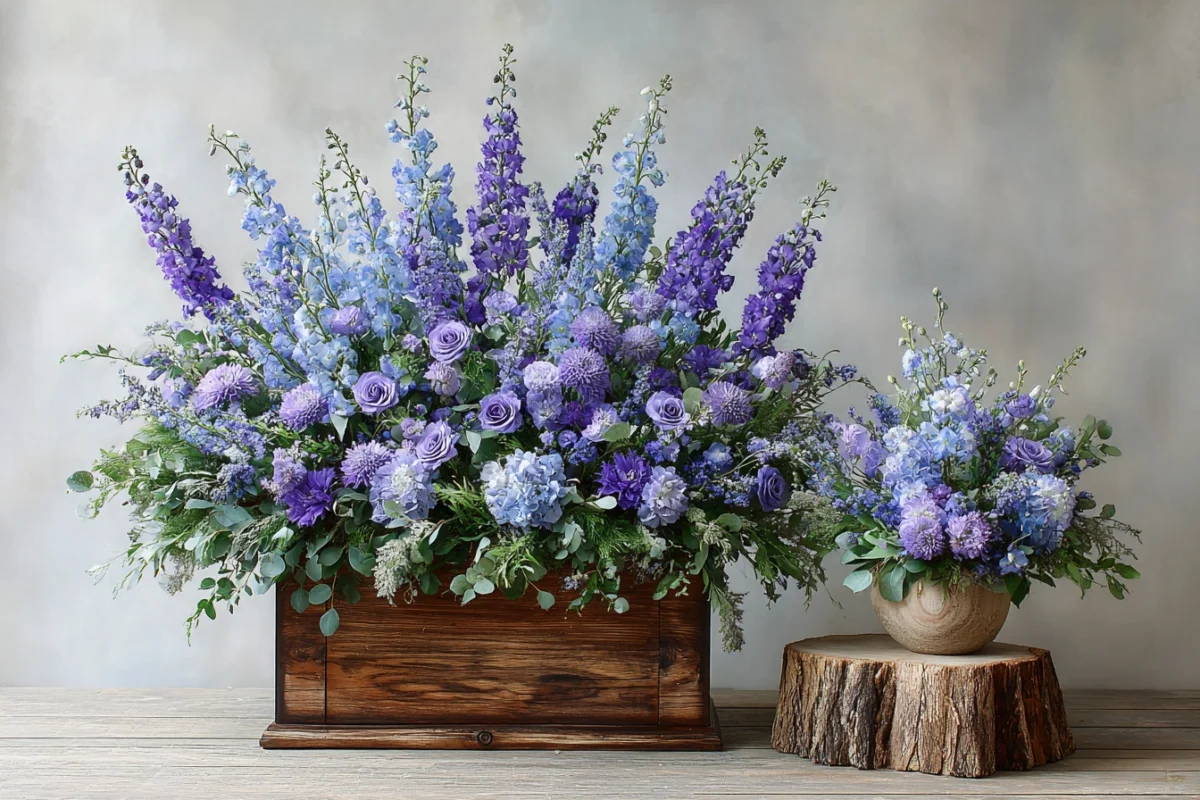
In general, the presence of blue in floral tributes can evoke feelings of calmness and serenity, making it an appropriate choice for memorial services. Different societies around the world have ascribed various meanings to specific blue flowers. For instance, forget-me-nots are often utilized in funerals, symbolizing remembrance and enduring love. Similarly, hydrangeas are associated with heartfelt emotions and gratitude, serving as a poignant tribute to a loved one lost. The use of blue in these contexts can transform a funeral from a setting of deep sorrow to one where love and cherished memories are celebrated.
Moreover, the emotional weight that blue flowers carry varies across cultural landscapes. In some traditions, blue is linked to spirituality and represents a connection to the divine, making it a fitting choice for honoring the deceased. Festivals and memorial events that utilize blue floral arrangements aim to convey tranquility amidst grief, facilitating a space where friends and family can reflect on the beauty of the life that was lived.
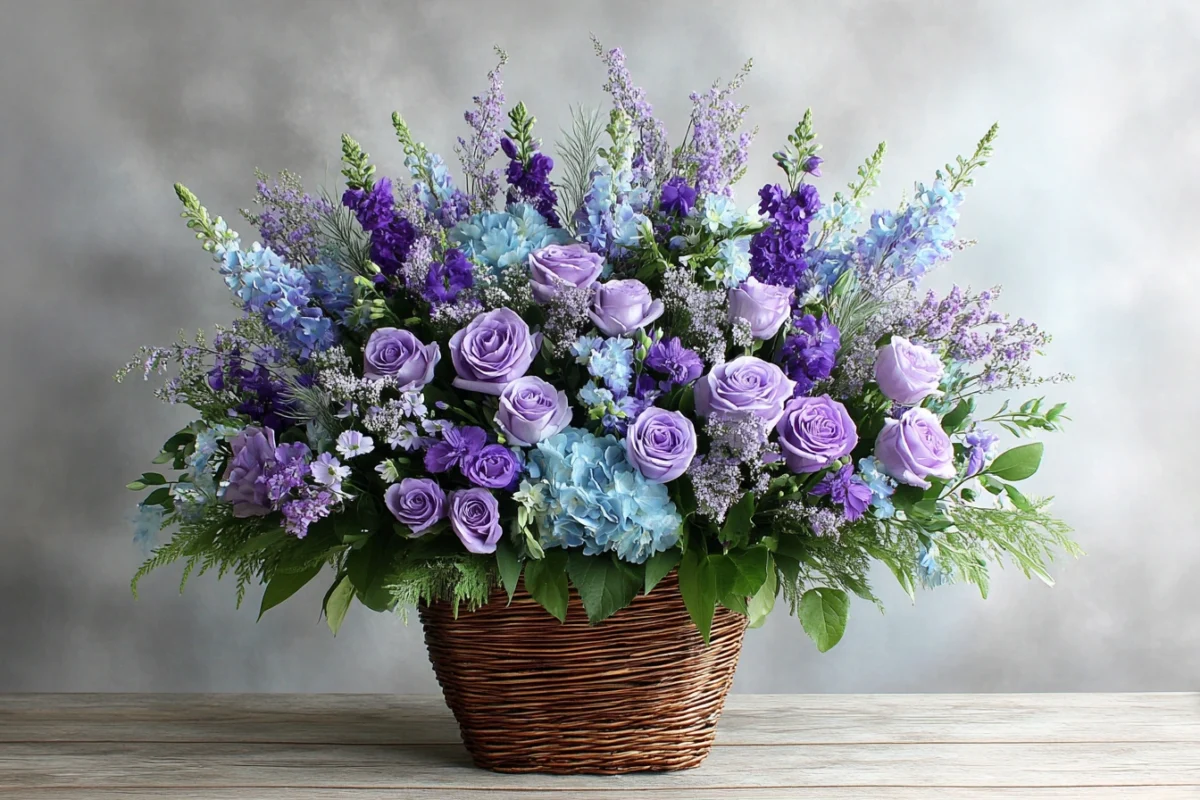
Overall, the cultural significance and symbolism of blue flowers extend well beyond their aesthetic appeal, reinforcing their role in celebrating the lives of those who have departed. By choosing blue flowers for funeral arrangements, mourners can express their emotions and offer comfort to one another during challenging times.
Common Blue Flowers Used in Funeral Tributes
Blue flowers hold a unique position in the context of funerals, often symbolizing tranquility, peace, and remembrance. Several types of blue flowers are frequently incorporated into funeral arrangements, each offering a distinct meaning and aesthetic appeal. Among these, blue hydrangeas are notable for their lush, full blooms. These flowers represent heartfelt emotions and understanding, making them an apt choice for conveying sympathy and support. Hydrangeas bloom in late spring to early summer, making them readily available during key months for memorial services.
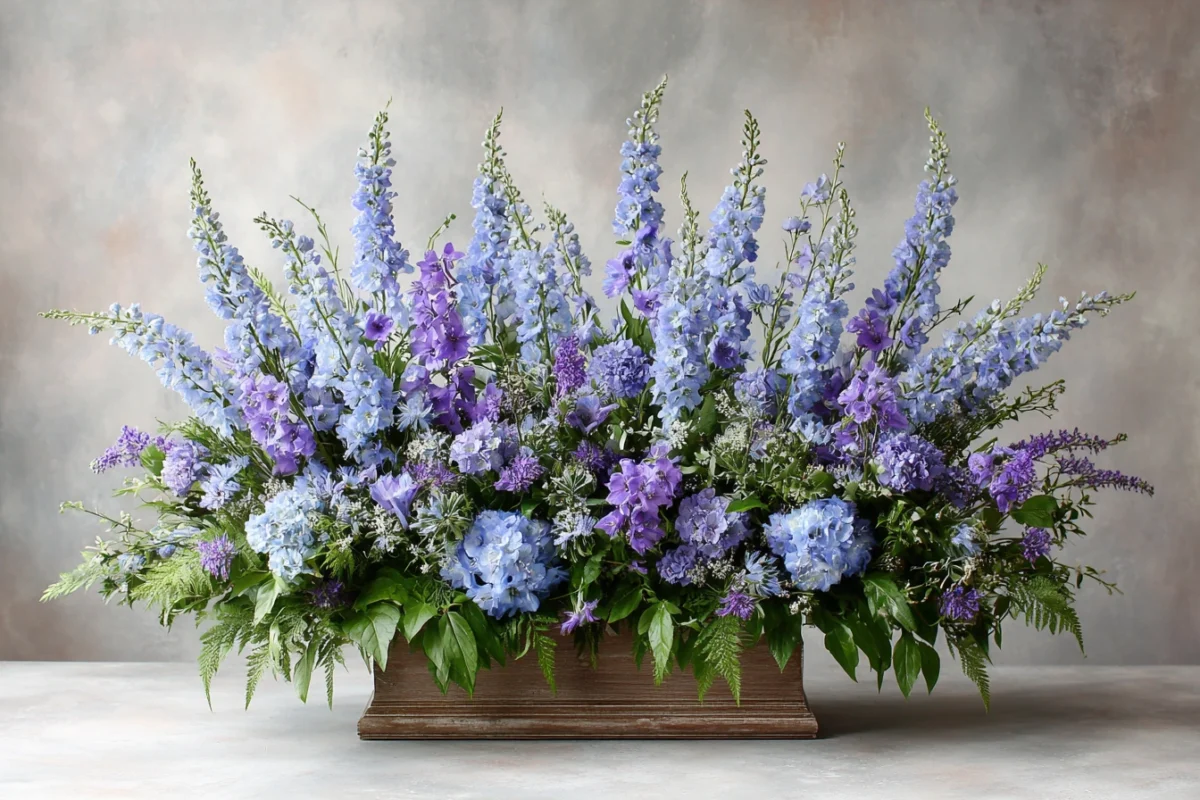
Delphiniums are another prominent blue flower used in funeral tributes. These tall, striking flowers come in various shades of blue, and they symbolize an open heart and joy. Their vibrant color can add a sense of uplifting energy while still retaining a somber tone, which is essential in memorial contexts. Delphiniums are typically available from early summer through early fall, providing a seasonal option for those planning memorial services during this timeframe.
Cornflowers, with their vivid blue hue, have also made a significant impact in funeral arrangements. These charming blooms evoke a sense of nostalgia and remembrance, often signifying hope and new beginnings, which can be a comfort to grieving families. Cornflowers bloom from late spring to early summer, offering another seasonal alternative for floral tributes. Including a diverse selection of blue flowers such as hydrangeas, delphiniums, and cornflowers can create a meaningful and poignant tribute, honoring a loved one while providing solace to those left behind. Each of these flowers contributes to an overall atmosphere of peace and reflection during a difficult time.
Arranging Blue Flowers for Funerals: Tips and Ideas
When arranging blue flowers for funerals, selecting the appropriate arrangement style is essential. Common options include bouquets, wreaths, and sprays. Bouquets can be placed on caskets or among memorial displays, creating a personal tribute. Wreaths, representing eternal life, are often positioned at the entrance or altar, while sprays are typically placed on caskets or memorial tables. Each type of arrangement serves a unique purpose and can offer comfort to grieving families.
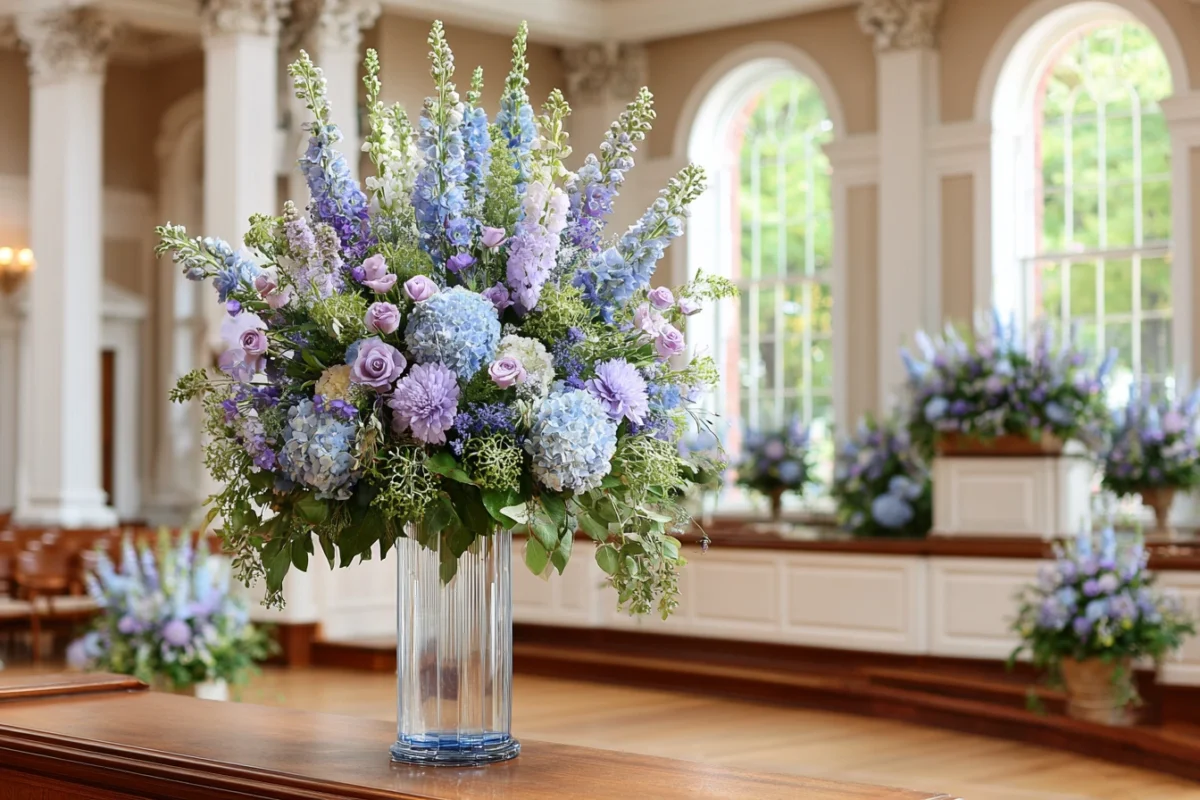
Choosing the right combination of blue flowers is crucial. Popular choices include hydrangeas, delphiniums, and irises, known for their vibrant hues and symbolic meanings of peace and respect. Incorporating additional colors can enhance the arrangement’s visual appeal and convey specific sentiments. For instance, pairing blue flowers with white lilies symbolizes purity and innocence, while yellow roses can represent friendship and love. Such combinations can reflect the personality of the deceased, showcasing their uniqueness through thoughtful color selections.
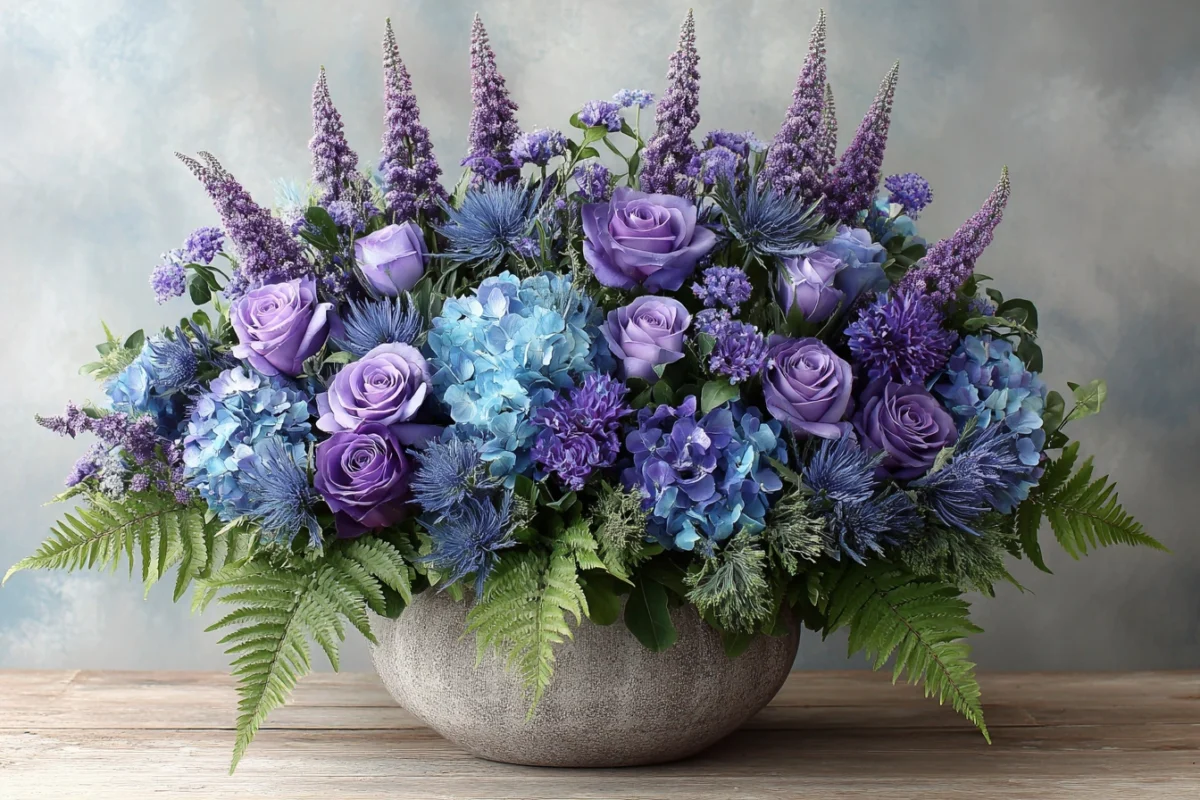
In addition to the types and colors of flowers, the size and location of the arrangements should be taken into account. A large, prominent display may be more suitable for a service in a spacious venue, effectively drawing attention, while smaller arrangements might work better in intimate settings. Considering the location is equally important; for instance, using waterproof materials for cemetery displays ensures longevity even when exposed to the elements. Additionally, honoring the preferences of the deceased or their family regarding floral arrangements underlines the significance of personalization in these tributes.
In conclusion, arranging blue flowers for funerals requires careful thought and consideration. By thoughtfully selecting flower types, colors, and sizes, one can create a beautiful tribute that resonates with the memories of the departed individual and provides solace to their loved ones during a profoundly difficult time.
Personalizing Funeral Flowers with Blue Accents
Personalizing funeral flowers with blue accents can provide a heartfelt tribute that reflects the unique character of the deceased. Blue flowers, symbolizing tranquility and peace, can be a poignant choice when memorializing a loved one. To further enhance the emotional resonance of floral arrangements, consider integrating personal mementos that held significance to the individual. This could include small keepsakes, photographs, or items that represent cherished memories, allowing the arrangement to evoke a deeper connection for family and friends.
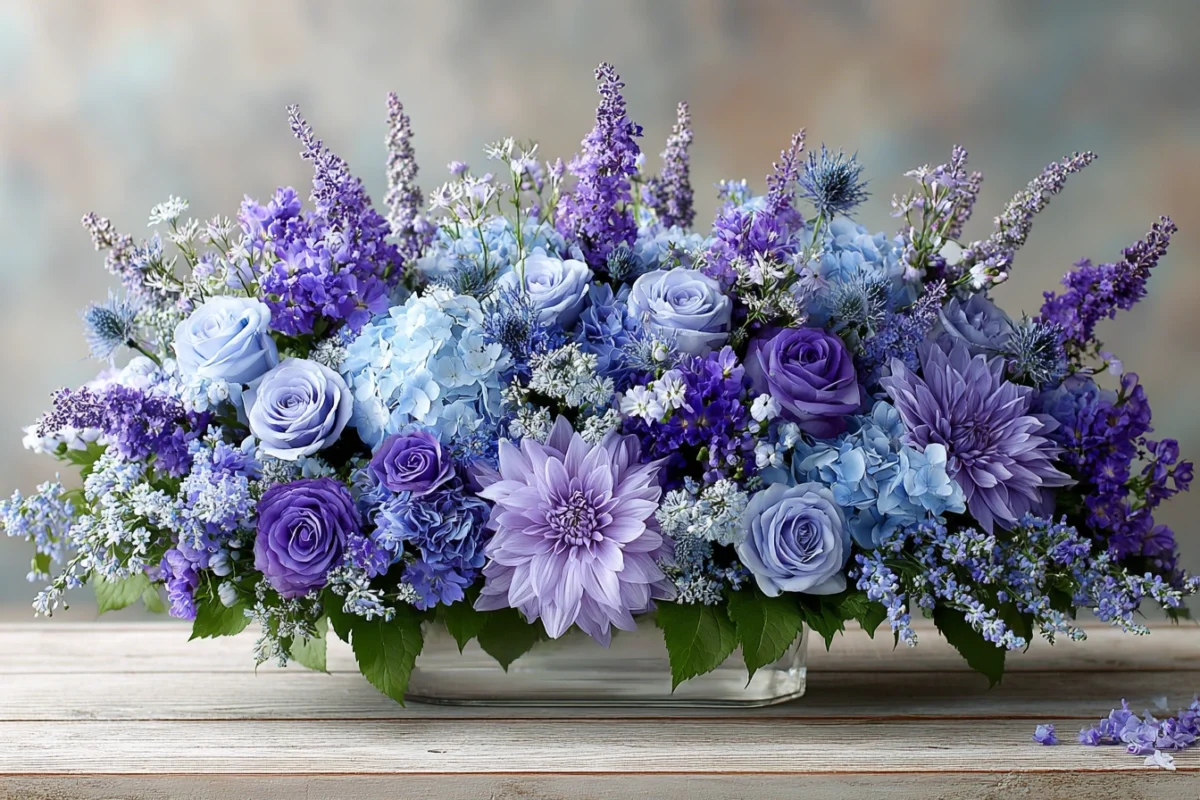
Additionally, specific combinations of blue flowers can be tailored to honor the deceased’s preferences and experiences. For example, including blue hydrangeas, which signify understanding and gratitude, alongside delicate bluebells that represent humility, can create a thoughtful homage that encapsulates their personality. Some may choose to include white flowers, juxtaposed with the blue, to symbolize purity and innocence, creating a visually impactful contrast that conveys love and remembrance.
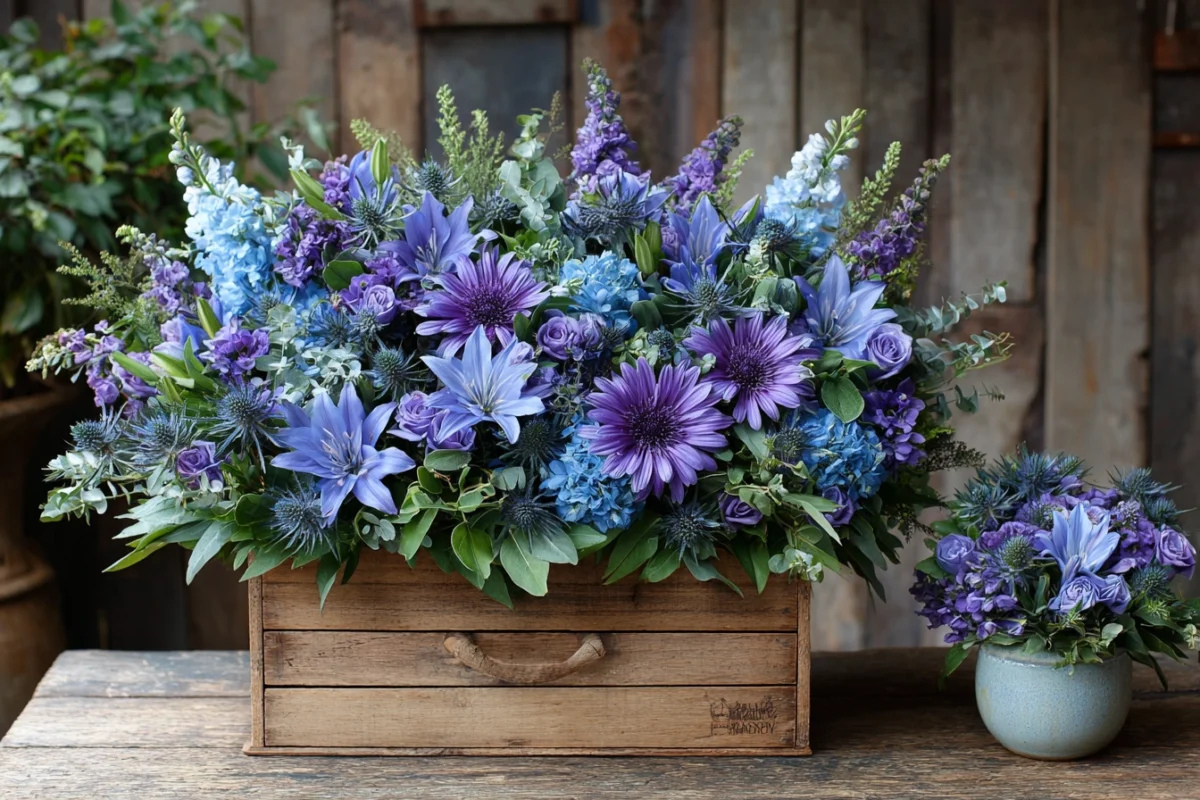
Creative display options also play a crucial role in personalizing funeral arrangements. Opting for unique vase choices, such as decorative jars or rustic containers, can transform a traditional arrangement into a bespoke piece. You might also consider using a themed backdrop that reflects the deceased’s interests, such as incorporating elements from their favorite hobbies or colors. This not only elevates the aesthetic appeal but also reinforces the emotional significance behind the tribute.
By thoughtfully selecting blue flowers and combining them with personalized elements, those left behind can create a meaningful tribute that resonates deeply, celebrating the life of the departed while providing comfort to those grieving.

